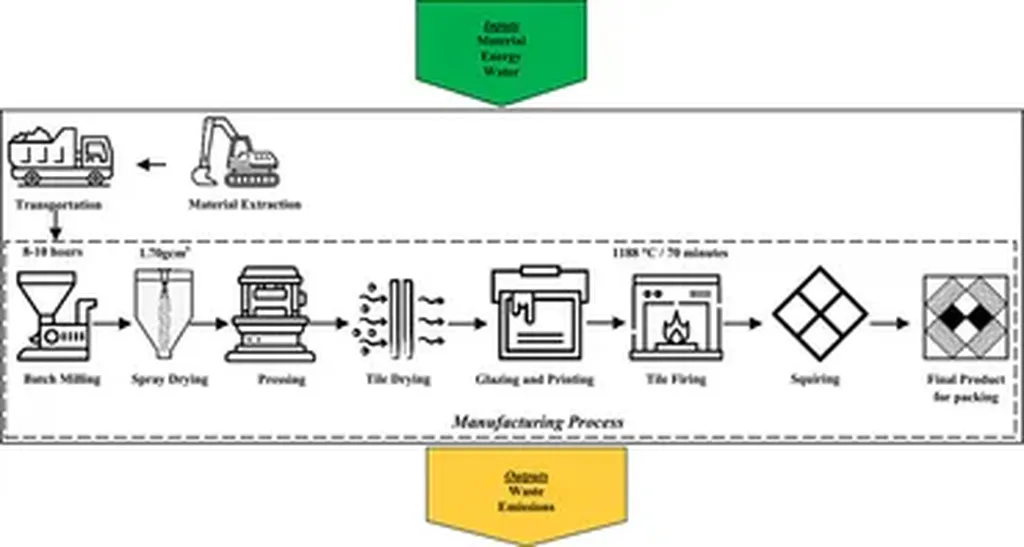In the lush landscapes of Sri Lanka, a significant stride towards sustainable construction is being made, not in the sprawling tea plantations or the bustling cities, but in the often-overlooked world of ceramic tile production. Dimuthu Thisna Vijerathne, a researcher from the Faculty of Graduate Studies at Sabaragamuwa University of Sri Lanka, has published a compelling study in the journal *Frontiers in Built Environment* (which translates to “Frontiers in the Built Environment”), shedding light on how the ceramic tile industry can reduce its environmental footprint.
The study, titled “Advancing environmental sustainability of ceramic tile production: a cradle-to-gate life cycle assessment case study from Sri Lanka,” delves into the environmental impacts of ceramic tile manufacturing. Vijerathne’s research employs a cradle-to-gate life cycle assessment (LCA), a method that evaluates the environmental impacts of a product from raw material extraction to the factory gate, before it reaches the consumer.
“Ceramic tile production is energy-intensive, and the industry has a significant environmental impact,” Vijerathne explains. “Our study aimed to identify the hotspots in the production process and explore eco-innovation scenarios to mitigate these impacts.”
The research highlights the mid-point environmental impacts of ceramic tile production, providing a comprehensive overview of the industry’s ecological footprint. Vijerathne’s work is not just about identifying problems; it’s about finding solutions. The study explores various eco-innovation scenarios, offering practical strategies for the industry to reduce its environmental impact.
So, what does this mean for the energy sector and the construction industry at large? The findings suggest that by adopting more sustainable practices, the ceramic tile industry can significantly reduce its energy consumption and greenhouse gas emissions. This is not just good for the environment; it’s good for business. As the global push for sustainable construction gains momentum, companies that can demonstrate a commitment to eco-innovation will be well-positioned to meet the demands of an increasingly eco-conscious market.
Vijerathne’s research is a testament to the power of life cycle assessment as a tool for driving sustainability in the construction industry. By providing a clear, data-driven overview of the environmental impacts of ceramic tile production, the study offers a roadmap for the industry to reduce its footprint and contribute to a more sustainable built environment.
As the world grapples with the challenges of climate change, research like Vijerathne’s is more important than ever. It’s a reminder that sustainability is not just about grand gestures; it’s about the small, practical changes we can make in our industries and our communities. And in the world of ceramic tile production, those changes could have a significant impact.
In the words of Vijerathne, “This research is just the beginning. There’s still much work to be done, but I’m hopeful that our findings will inspire further innovation and action in the industry.” With studies like this, the future of sustainable construction is looking brighter—and greener—than ever.

